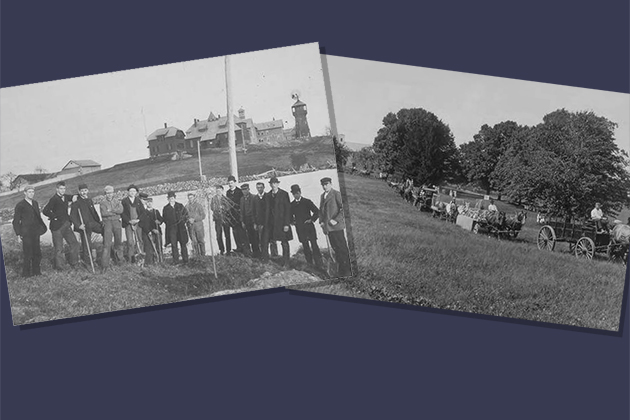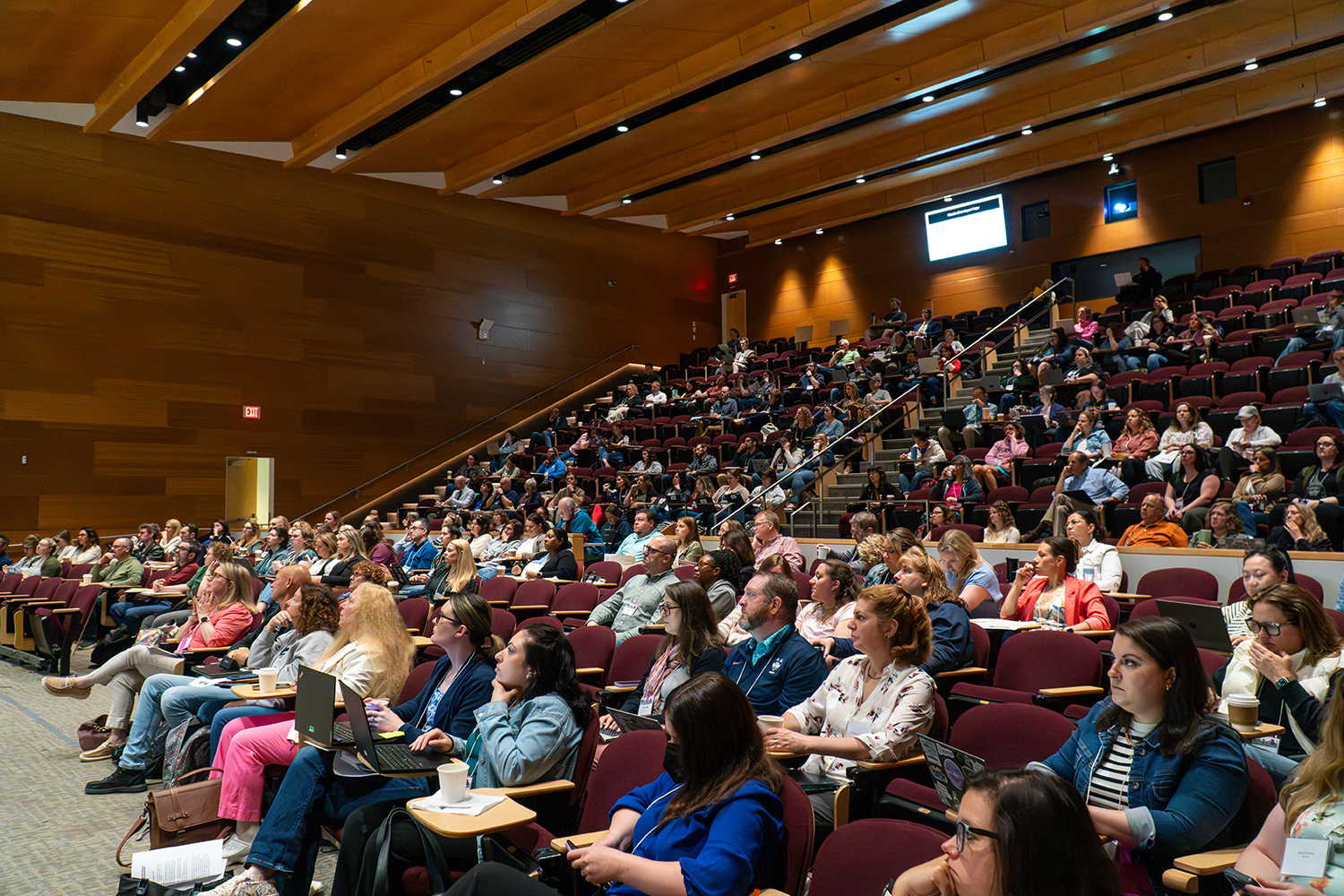Updated from a previously published article by Mark J. Roy in the UConn Advance newspaper (Nov. 24, 1997).

This year, UConn celebrates the 150th anniversary of the Land Grant Act of 1862 – known as the first Morrill Act.
Connecticut was the third state in the nation to accept the terms of the act, which donated “public lands to the several States and Territories which may provide colleges for the benefit of agriculture and the mechanic arts,” and provided funding for those colleges.
In Connecticut, the logical choice on which to bestow the state’s land grant funds was Yale University. At that time, there was no University of Connecticut – there wasn’t even a Storrs Agricultural School. When the selection was made in 1863, Yale became the first institution to operate under the terms of the act.
“Yale was to accept, free of tuition, a sufficient number of students, nominated by the state, to account for half the annual interest” from an investment of funds as outlined by Congress, said Walter Stemmons in his history of Connecticut Agricultural College (as UConn was known for a time), written in 1930.
Also in 1863, the State entered into a contract with Yale that designated the Sheffield Scientific School as the land grant college of Connecticut. A three-year course in agriculture was offered, and the curriculum had an emphasis on languages, especially French and German. “‘The educated farmer should read them with ease,’ says a school report of 1865,'” wrote Stemmons.
There was some criticism: Yale had no farm and students had to visit farms outside New Haven; worst of all, Yale was a “classical college” and not a farm school. But it was not until the late 1880s that the criticism swelled into a movement to take the land grant status away from Yale. By now, Storrs Agricultural School, founded in 1881, was having “serious troubles of its own. It was widely criticized. Agitation for moving the school was widespread. Its future under state support was uncertain. At almost any time it might have died an inglorious death,” wrote Stemmons.

As it would do many times over the first decades of the school, the Connecticut Grange came to the aid of the small school in Storrs. At the farm organization’s second annual session, held Dec. 7, 1886, in Hartford, members heard a report that launched what would be known as the “Yale-Storrs controversy.”
J.H. Hale of Glastonbury gave his fellow Grangers statistics showing that, in its first 24 years as the state’s land grant institution, Yale had graduated only seven students in the agricultural course, at a cost of $180,000, or $25,700 per student. Hale questioned the spending, the strict entrance exam, and the curriculum.
Nationally, the Grange movement was following a similar campaign against “classical” education. Stemmons notes in his history that the fight in Connecticut “was anti-Yale, not pro-Storrs. The same phenomenon was repeated in other states where the Land Grant Act had been grafted on to privately endowed “classical” institutions. Dartmouth apparently gave up willingly, Brown not so willingly. In its larger implications, the feud might be reported as “the National Grange vs. Classical Colleges.” In Connecticut, however, it was and is known as “the Yale-Storrs Controversy.”
The disagreement was briefly settled following federal passage of the Hatch Act in 1887: the state awarded half the income from that act to the Connecticut Agricultural Experiment Station in New Haven, and half to the newly created Storrs Agricultural Experiment Station. In Rhode Island, says Stemmons, the General Assembly created the Rhode Island College of Agricultural and Mechanic Arts (now the University of Rhode Island) “evidently for the express purpose of preventing the Hatch Act fund from falling into the hands of Brown, then the land grant college of Rhode Island.”
On April 21, 1893 – exactly 12 years after it established Storrs Agricultural School – the Connecticut General Assembly passed an act establishing Storrs Agricultural College, making it the beneficiary of the Morrill acts of 1862 and 1890. Students still enrolled at Yale would complete their studies in New Haven and the state would pay for it, but no new nominations or appointments were to be made to Yale under the old agreement with the state. (The same act that changed the Storrs school to a college also allowed for the admission of women, although the administration had been letting them take classes since 1891.)
“Yale didn’t like it,” said the late Albert Waugh, a former UConn provost, in remarks he made for the centennial of the University in 1981. “In the first place it was a loss of funds. And no university administrator likes to lose funds. In the second place there was a blow to pride.”
Yale sued, asking for damages. The court ruled that the state did break its contract with Yale and that damages should be paid, but it also ruled that the federal land grants were to states and not institutions and the State of Connecticut could do with its grant what it wished.
A three-member special commission, voting two to one, awarded Yale $154,604 in damages. The decision that was delivered Jan. 20, 1896, wrote Stemmons in 1930, “ended the legal phase of the famous Yale-Storrs controversy, but did not end the ill feeling that the long struggle had involved.”
For more information about the Morrill Act and 150 Year Celebration, visit morrillact.uconn.edu.
Sources: Walter Stemmons, Connecticut Agricultural College – A History (The Tuttle, Morehouse & Taylor Co., New Haven: 1931). Address by Albert E. Waugh at the opening convocation of the UConn Centennial, Sept. 23, 1980. Materials used in this series can be found in the Archives and Special Collections of the Thomas J. Dodd Research Center.



